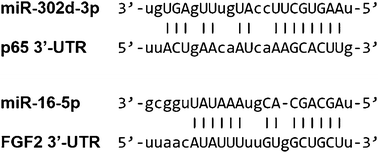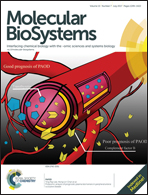Tumor suppressors microRNA-302d and microRNA-16 inhibit human glioblastoma multiforme by targeting NF-κB and FGF2
Abstract
Glioblastoma multiforme (GBM) is a highly malignant cancer in the brain with a median survival time of approximately one year. However, the mechanisms underlying GBM development and occurrence are poorly understood. Recently, miRNAs were reported to play important roles in GBM. We performed microRNA profiling by comparing the human GBM cell line T98G and control cell line HCN1A. MicroRNA assays, PCR and Western blot analysis were performed to detect the expressions of microRNAs, mRNAs and proteins of target genes, respectively. Cell migration and invasion assays were conducted. A murine in situ xenograft tumor model was used to evaluate tumor growth in vivo. Glioblastoma tissues were examined to investigate the clinical relevance of our findings. MiR-302d and miR-16 levels were found to be decreased in T98G cells. MiR-302d and miR-16 inhibited the expressions of p65 and FGF2, respectively, by binding to the 3′-UTR of their mRNAs. Over-expression of miR-302d and miR-16 inhibited T98G cell migration and invasion in vitro, and tumorigenesis in the xenograft tumor mouse model in vivo, by suppressing p65 and FGF2. Negative correlations between miR-302d and p65 and between miR-16 and FGF2 were observed in patient glioblastoma tissues. MiR-302d and miR-16 inhibit tumorigenesis by down-regulating p65 and FGF2, which potentially contributes to the treatment of glioblastoma with clinical relevance.



 Please wait while we load your content...
Please wait while we load your content...